
An All American Road Trip - Part Six
(Yellowstone - Day One)
I look back and realize, though we saw much, there was much more we could have seen. Time and weather were concerns we had but being attentive and considerate to fellow travelers was also a primarary consideration. Then there were other places and people to see so choices had to be made. It wasn't a choice of limiting our experiece but taking advantage of the time we had.

We were met with a bit of a surprise when we encountered weather that reminded us more of December than June. It began as rain and a overcast day and then turned into a blustery winter day though it seemed out of place and hard to comprehend for a June vacation.
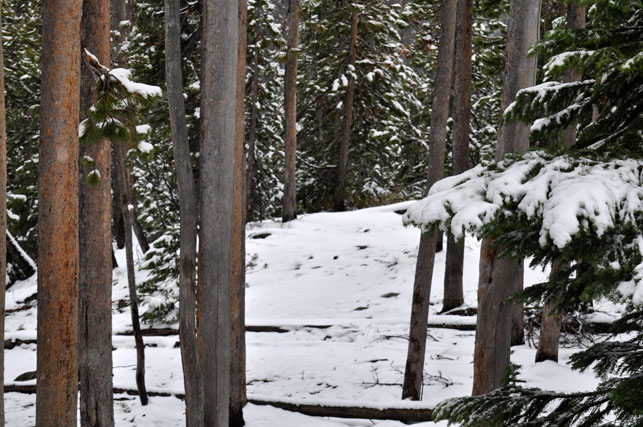
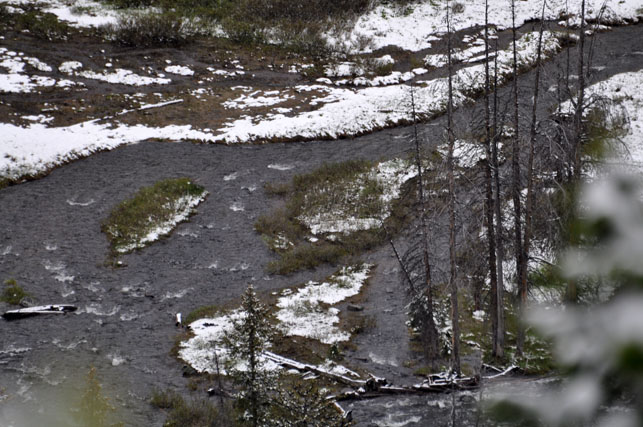

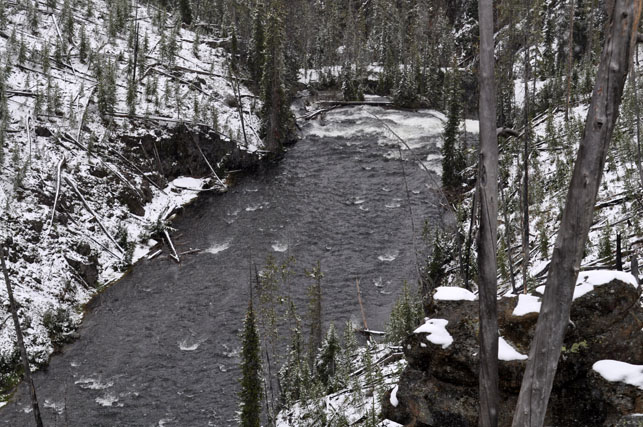
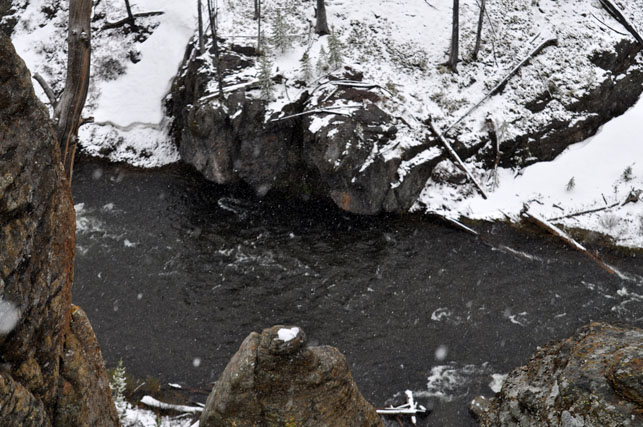
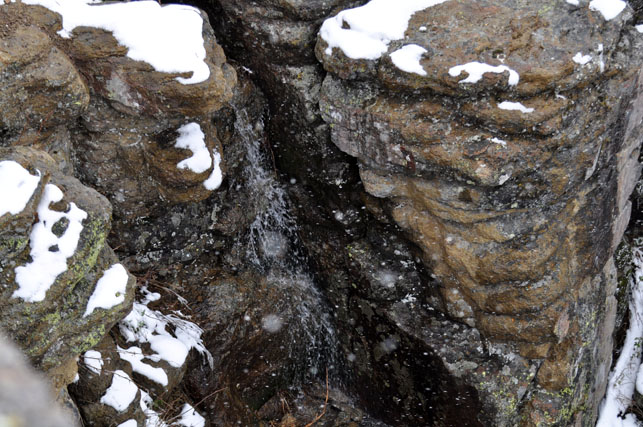

Lewis Falls
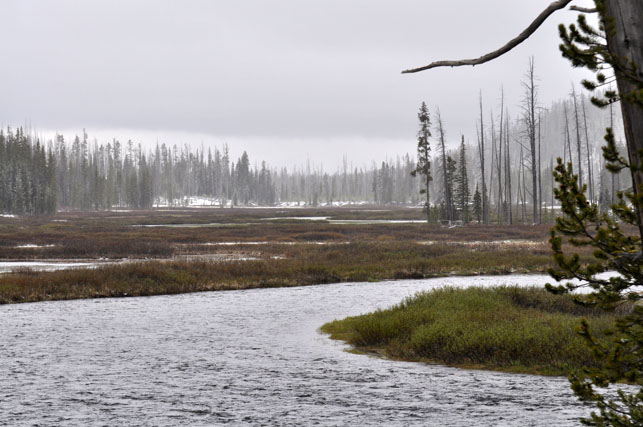

We knew that we were going to have wet and nasty weather but I am not so sure that any of us expected it to be quite as cold as it was. Yet, we had chosen to go into the high country not realizing the full impact of that choice - so we moved on toward our goal for that day which was Old Faithful and other warm water geyers in Yellowstone.
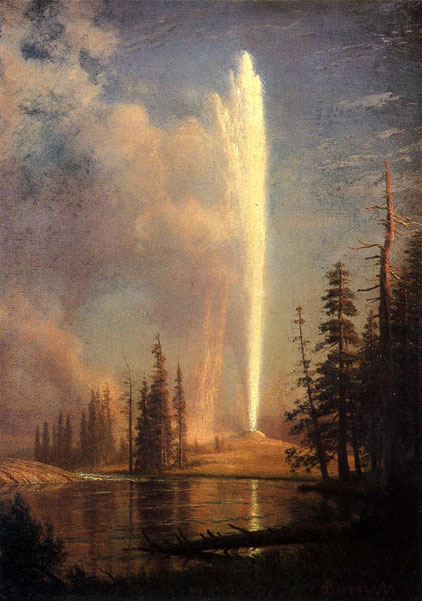
Old Faithful by Albert Bierstadt, 1881
Old Faithful
Old Faithful is a cone geyser located in Wyoming, in Yellowstone National Park in the United States. Old Faithful was named in 1870 during the Washburn-Langford-Doane Expedition and was the first geyser in the park to receive a name. It is also called the most predictable geographical feature on Earth erupting almost every 91 minutes. The geyser, as well as the nearby Old Faithful Inn, is part of the Old Faithful Historic District.
Expeditions and the Protection of Yellowstone (1869–1890) - Wikipedia
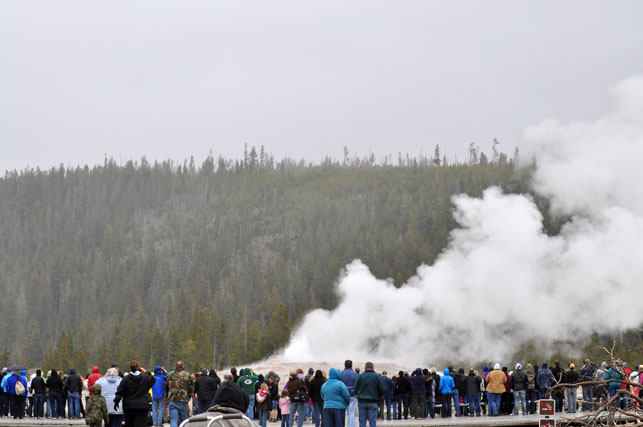
Old Faithful - Today
On the afternoon of September 18, 1870, the members of the Washburn-Langford-Doane Expedition traveled down the Firehole River from the Kepler Cascades and entered the Upper Geyser Basin. The first geyser they saw was Old Faithful. In his 1871 Scribner's account of the expedition, Nathaniel P. Langford wrote:
"Judge, then, what must have been our astonishment, as we entered the basin at mid-afternoon of our second day's travel, to see in the clear sunlight, at no great distance, an immense volume of clear, sparkling water projected into the air to the height of one hundred and twenty-five feet. "Geysers! Geysers!" exclaimed one of our company, and, spurring our jaded horses, we soon gathered around this wonderful phenomenon. It was indeed a perfect geyser. The aperture through which the jet was projected was an irregular oval, three feet by seven in diameter. The margin of sinter was curiously piled up, and the exterior crust was filled with little hollows full of water, in which were small globules of sediment, some having gathered around bits of wood and other nuclei. This geyser is elevated thirty feet above the level of the surrounding plain, and the crater rises five or six feet above the mound. It spouted at regular intervals nine times during our stay, the columns of boiling water being thrown from ninety to one hundred and twenty-five feet at each discharge, which lasted from fifteen to twenty minutes. We gave it the name of "Old Faithful."
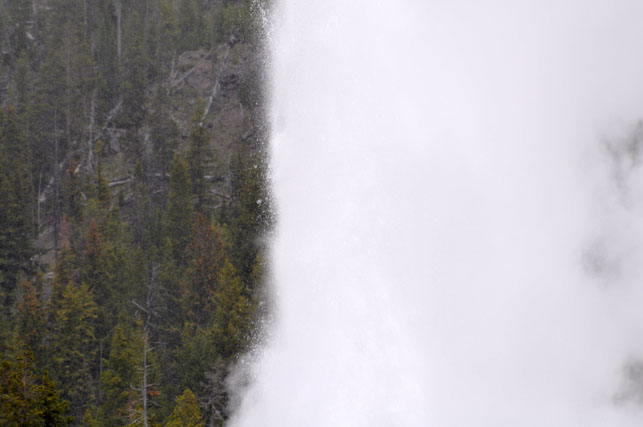
In the early days of the park, Old Faithful was often used as a laundry:
"Old Faithful is sometimes degraded by being made a laundry. Garments placed in the crater during quiescence are ejected thoroughly washed when the eruption takes place. General Sheridan's men, in 1882, found that linen and cotton fabrics were uninjured by the action of the water, but woolen clothes were torn to shreds."
Quoted From: Old Faithful - Wikipedia
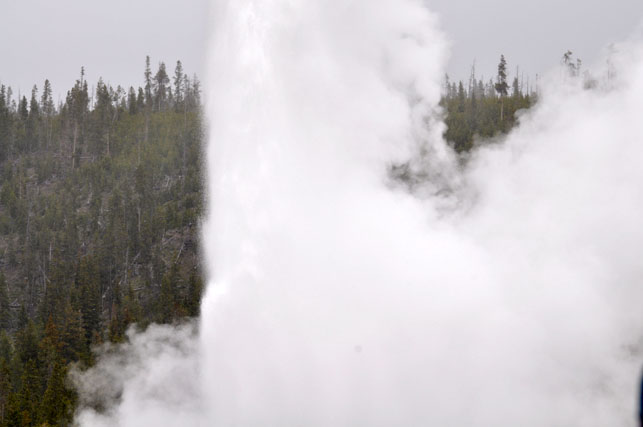
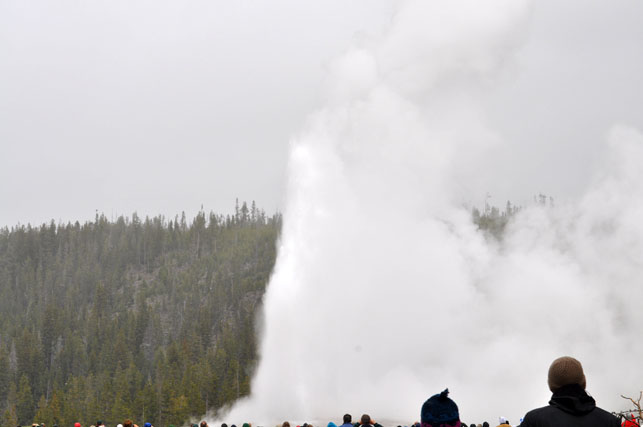
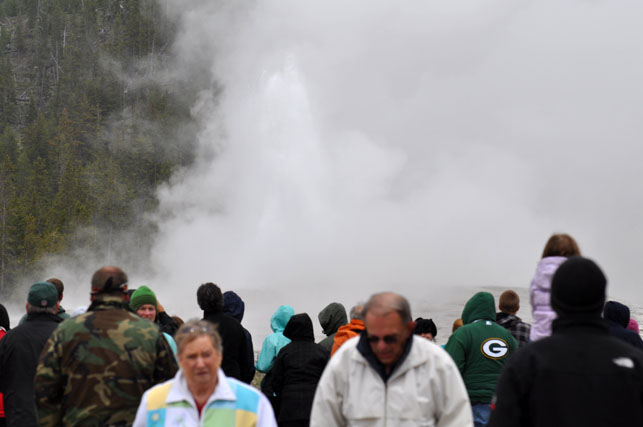
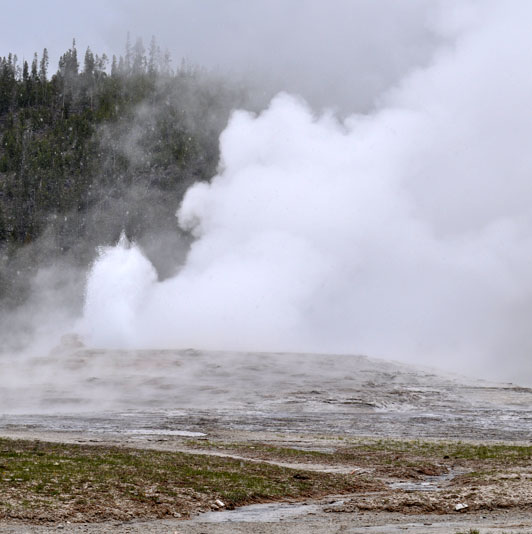
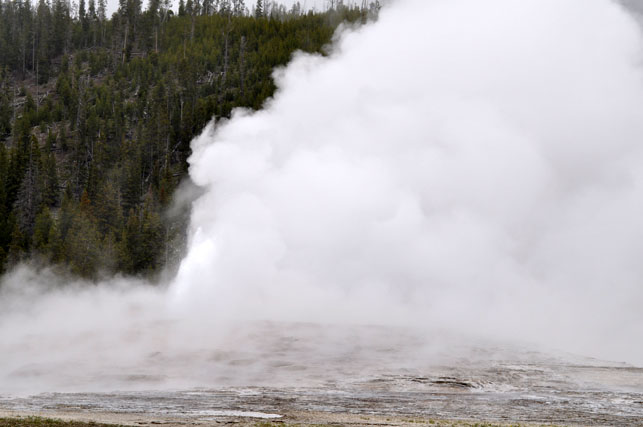
There were other geysers around Old Faithful that were much less predictable.
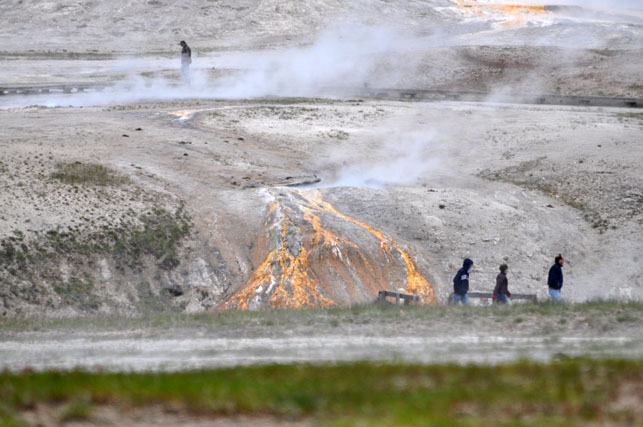
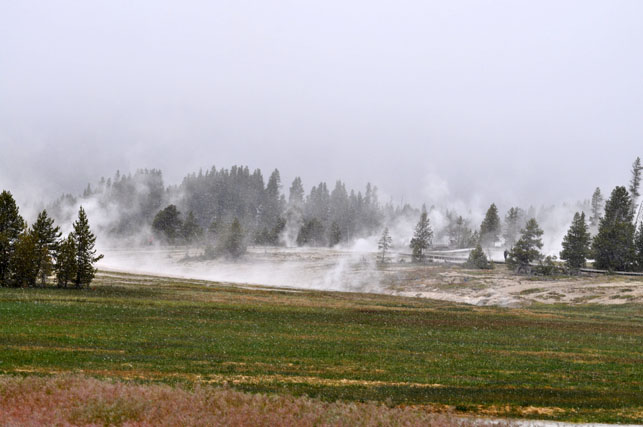
Castle Geyser
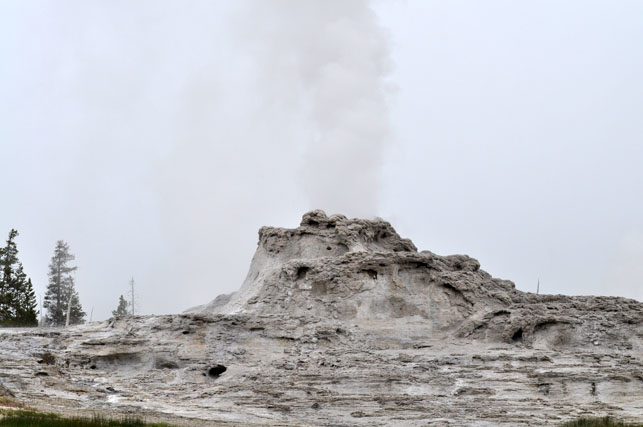

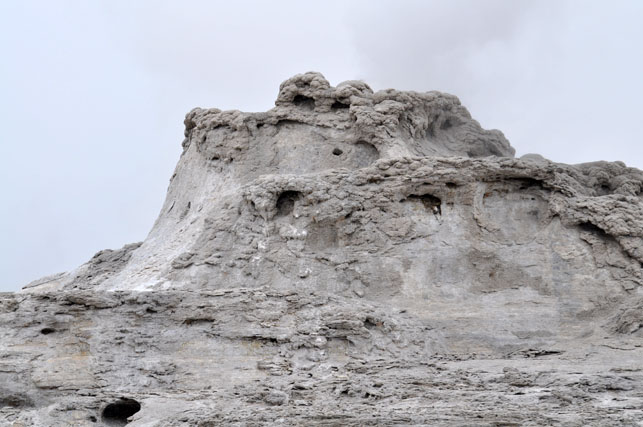
Castle Geyser
Castle Geyser is a cone geyser in the Upper Geyser Basin of Yellowstone National Park. It is noted for the particularly large geyserite sinter deposits, which form its cone. These deposits have been likened in appearance to a castle.
When the geyser was given this name in 1870, the top edges of the structure resembled the typical profile associated with the modern concept of a castle, having the appearance of a large keep, multiple turrets, and especially because of the crenellation along the top edges of what resembled its towers. As the drawing below shows the cone had distinctive appearance at the time. Over time the cone's shape changes because of the layers of mineral deposited in successive eruptions.
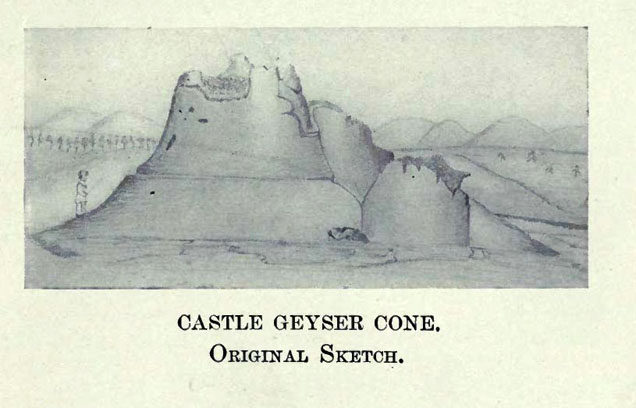
On September 18, 1870, the Washburn-Langford-Doane Expedition entered the Upper Geyser Basin. Eventually, members of the expedition named seven geysers they observed in the basin. The appearance of this geyser led Lieutenant Gustavus Cheyney Doane to name it Castle Geyser. Nathaniel P. Langford gave this account in his 1871 Scribner's article:
"The Castle, situated on the summit of an incrusted mound, has a turreted crater through which a large volume of water is expelled at intervals of two or three hours to the height of fifty feet, from a discharging orifice about three feet in diameter. The architectural features of the silicious sinter surrounding it, which is very massive and compact, indicating that at some former period the flow of water must have been much greater than at present, suggested its name. A vent near it is constantly discharging a large stream of boiling water, and when the geyser is in action the water in this vent boils and bubbles with great fierceness."
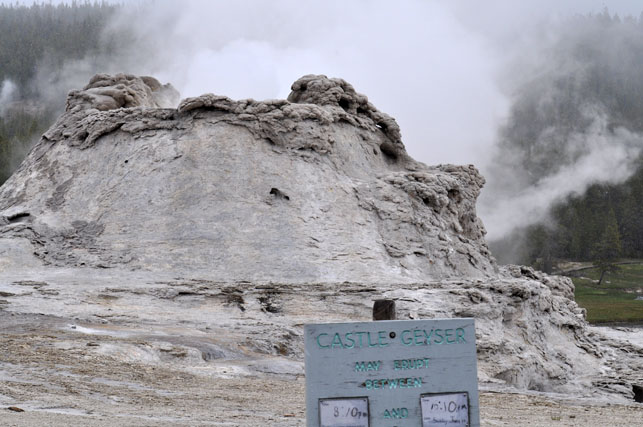
The Castle Geyser has a 10 to 12 hour eruption cycle. The geyser erupts hot water for about 20 minutes in a vertical column that reaches a height of 90 feet before changing to a noisy steam phase that issues for 30 to 40 minutes.
The sinter cone for Castle Geyser has been dated to around 1022 using carbon-14 dating. This date is much younger than the originally-presumed age of 5,000 to 15,000 years. A 3-D laser scan made of the cone reveals evidence that this geyser has evolved through four to five distinct stages to reach its current configuration.
In November 2002, an earthquake in Denali National Park and Preserve, Alaska caused Castle Geyser, as well as other geysers in Yellowstone, to decrease in eruption frequency. The affected geysers have returned to their previous pattern since that time, however.
Quoted From: Castle Geyser - Wikipedia
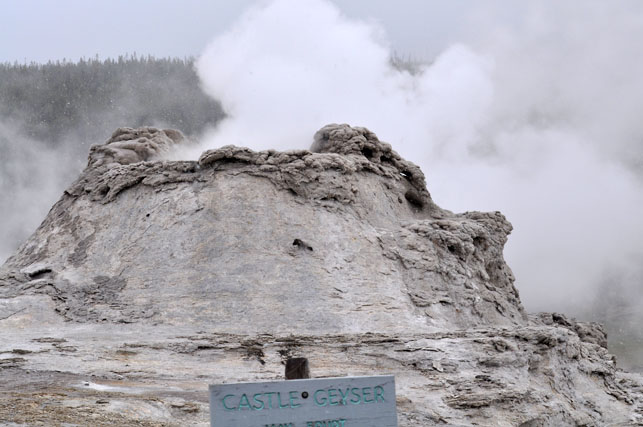
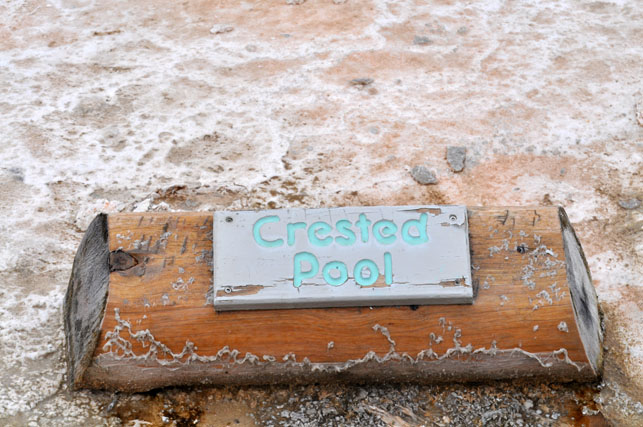
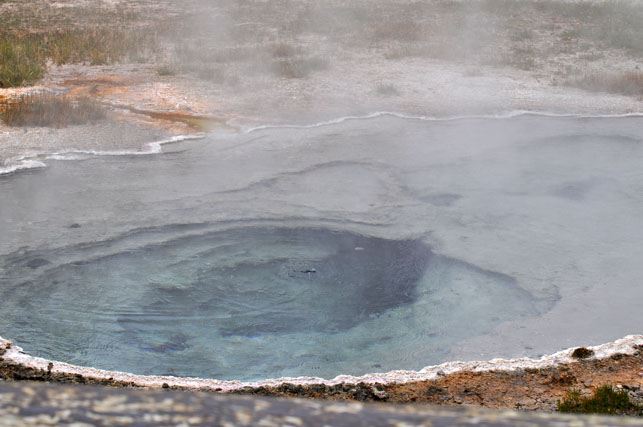
Crested Pool
Crested Pool is a hot spring in the Upper Geyser Basin in Yellowstone National Park. The spring is 42 feet deep. It is named for the "crest" which surrounds the pool. Although it is considered a spring, Crested Pool sometimes erupts like a geyser.
Crested Pool has had a variety of names since it was first described by the Hayden Geological Survey of 1871. In 1872, the Hayden survey of that year named the pool-Fire Basin. Also, in 1872, guidebook writer, Harry Norton, named the pool-Circe's Boudoir. Between 1872 and 1927, the pool was known by a variety of names-Diana's Spring, Devil's Well, Blue Crested Spring, Pool Beautiful, Castle Pool, and Diana's Bath. The name Crested Pool was accepted as official by the U.S. Board on Geographical Name committee in 1927, based on the name Crested Hot Spring on Gustavus Belcher's survey map of 1872.
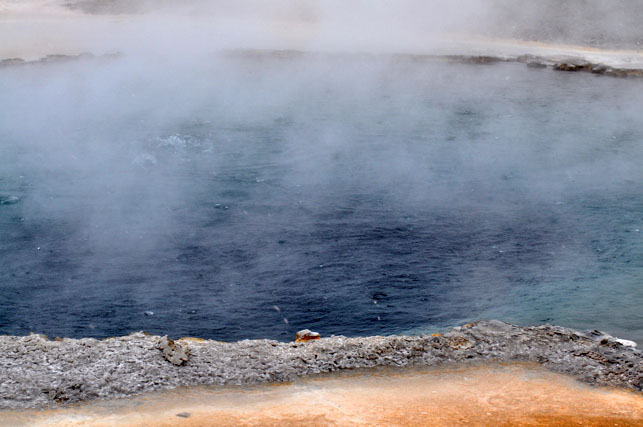
In 1970, a nine-year-old boy, Andrew Clark Hecht, accidentally fell into the spring and died. The Andrew Clark Hecht Memorial Public Safety Achievement Award was created in his memory, and is annually given to the individual or group who contributes the most in public safety. The recipient also receives $1,000 USD.
Quoted From: Crested Pool - Wikipedia

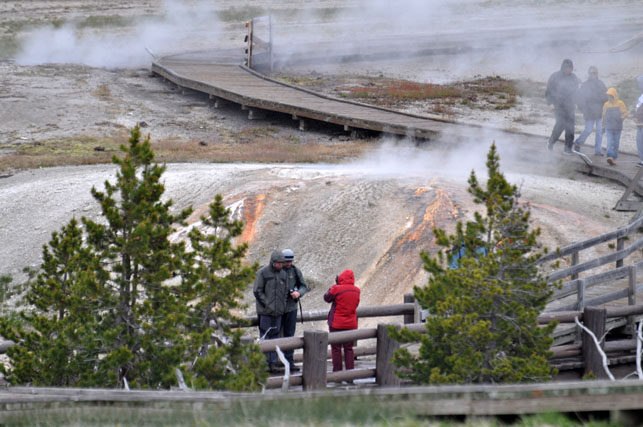
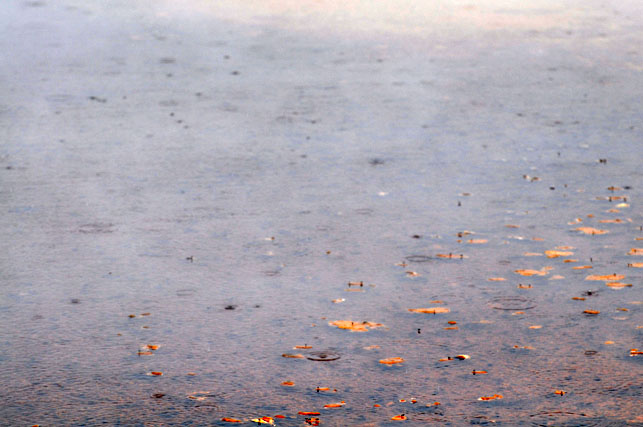
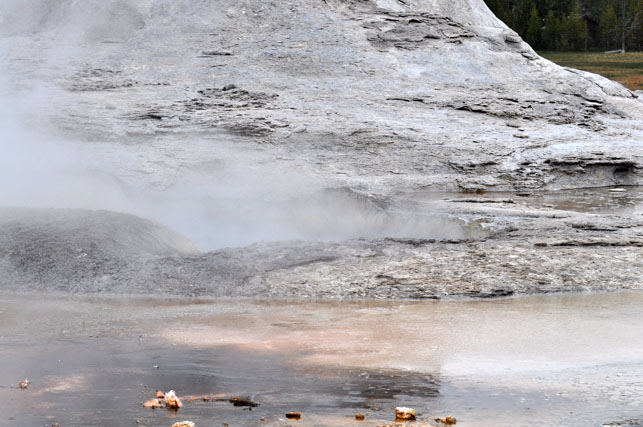
You see steam rising from the various hot springs that surround 'Old Faithful'.
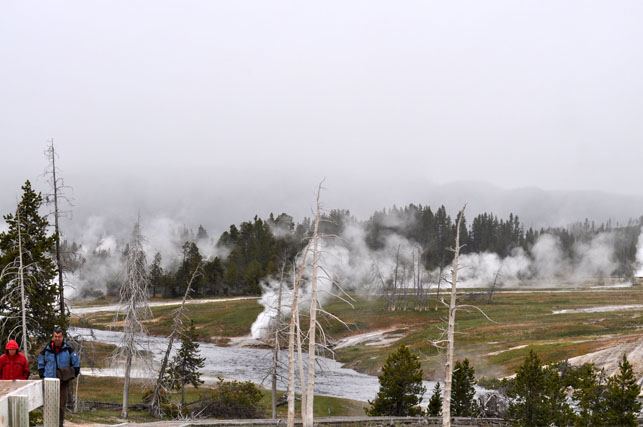
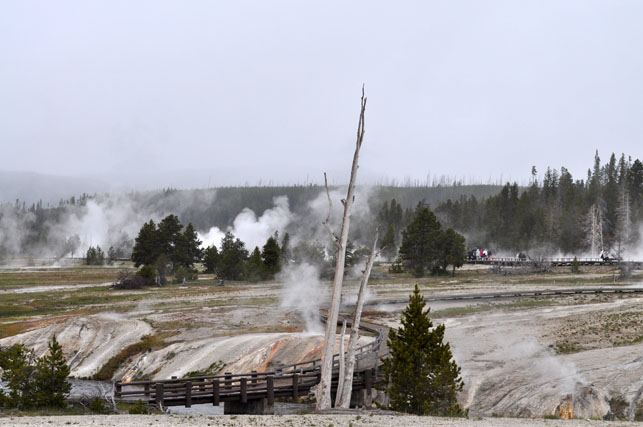
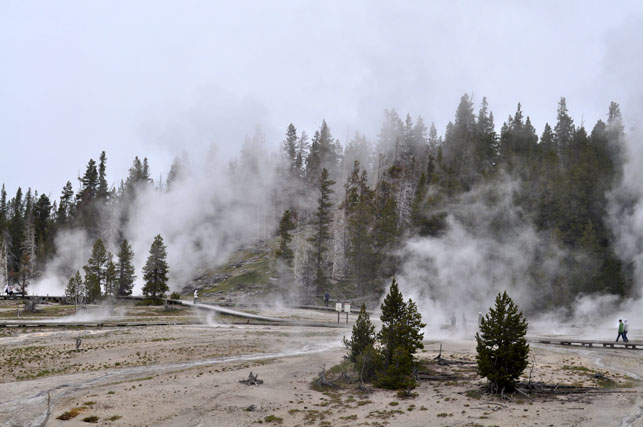
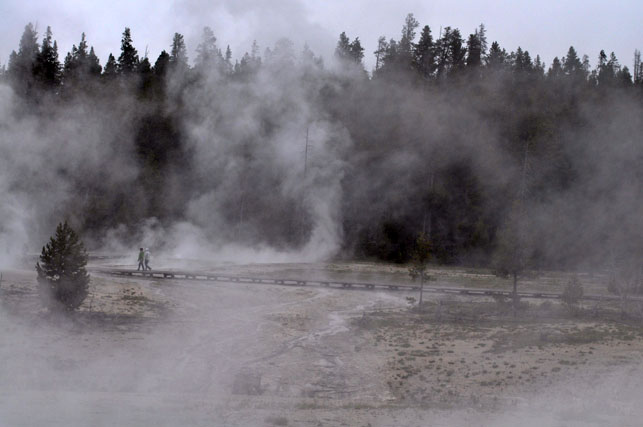
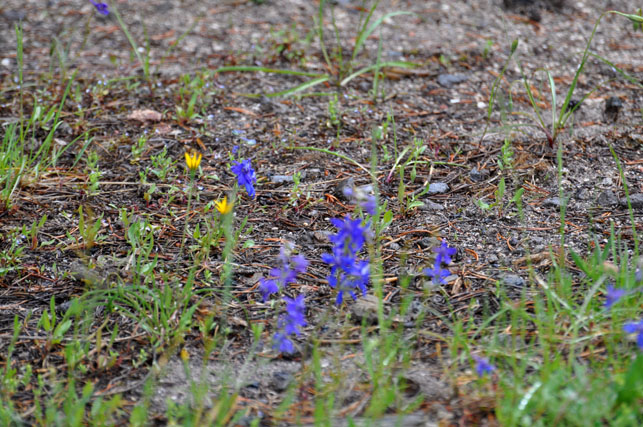
On the way out of Yellowstone on Day - One, we stopped by Kepler Cascades.
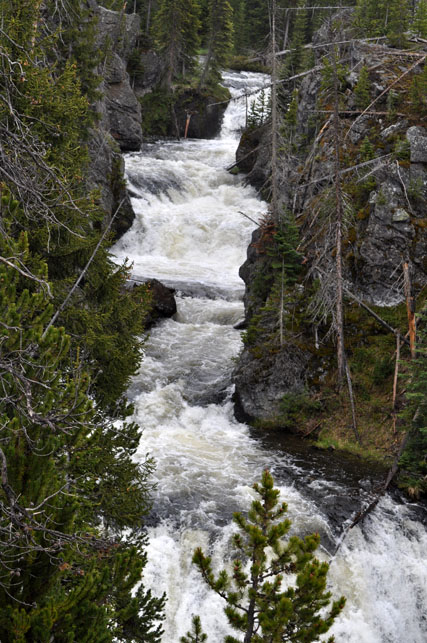
Kepler Cascades
Kepler Cascades is a waterfall on the Firehole River in southwestern Yellowstone National Park in the United States. The cascades are located approximately 2.5 miles south of Old Faithful. The cascades drop approximately 150 feet over multiple drops. The longest drop is 50 feet. The cascades are located very near to and visible from the Old Faithful to West Thumb road.
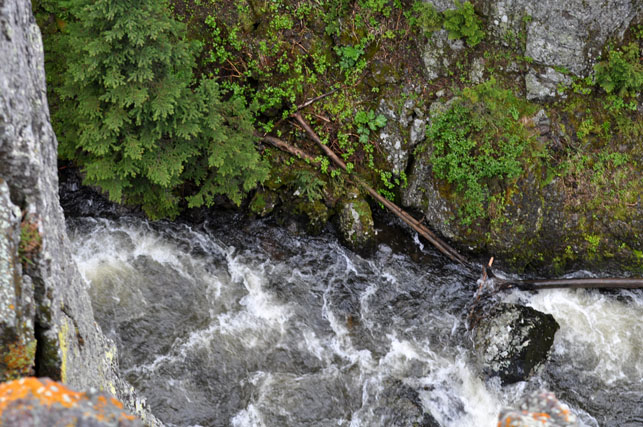
The Kepler Cascades were described by the Washburn-Langford-Doane Expedition in 1870 but not named until 1881. In his 1871 report to the Secretary of War, Gustavus C. Doane, a member of the expedition described Kepler Cascades as:
"September 18, 1870 -- We broke camp at 9 o'clock, traveling along the slopes of the ridges, skirting the ravines through falling timber, and passing in many places over swampy terraces, for a distance of three miles, when we suddenly came upon a mountain torrent, 40 feet wide, and running through a gorge of trachyte lava 200 feet in depth. This was the Firehole River, heading in a lake a few miles to the south. Following down the course of this stream we presently passed two fine roaring cascades, where the water tumbled over rocks to the depth of 20 and 50 feet successively. These pretty little falls, if located on an eastern stream, would be celebrated in history and song; here, amid objects so grand as to strain conception and stagger belief, they were passed without a halt."
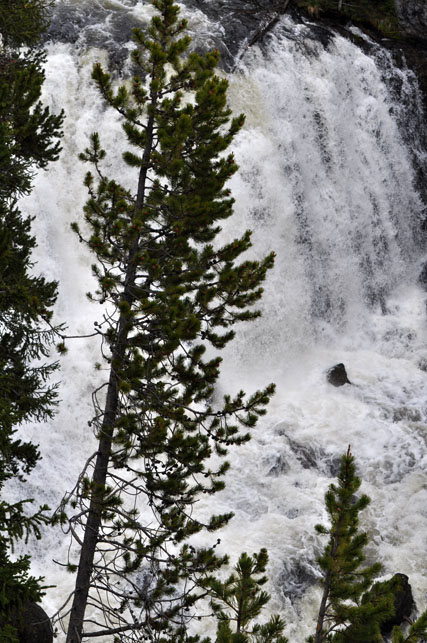
The cascades were named by Philetus Norris, park superintendent in 1881 for the 12 year old son of Wyoming's territorial governor John Wesley Hoyt. Hoyt and his son, Kepler Hoyt, were visiting Yellowstone in 1881 when Norris named the cascades after Kepler.
Quoted From: Kepler Cascades - Wikipedia

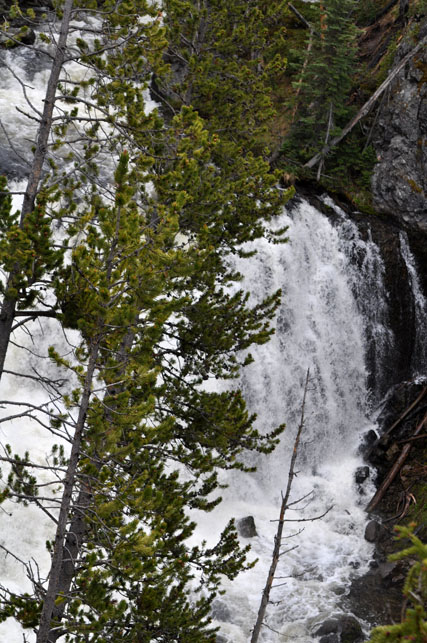
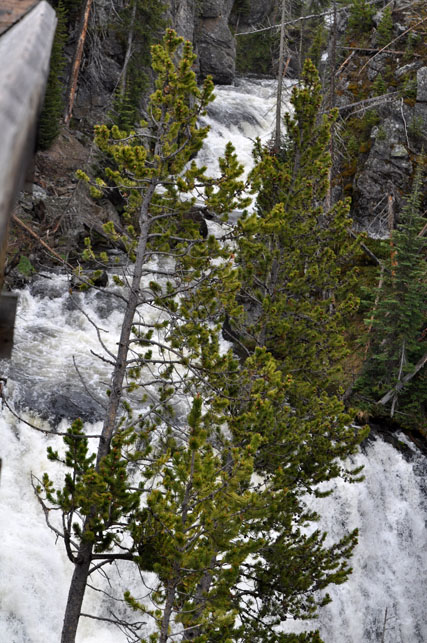
Another Camera and Photographer Means More Pictures
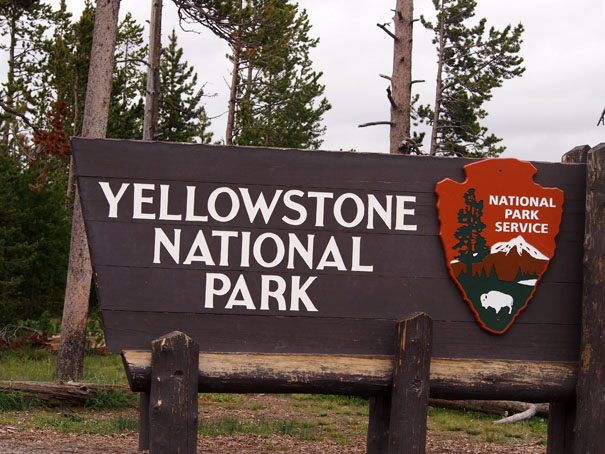
Back to Winter Again
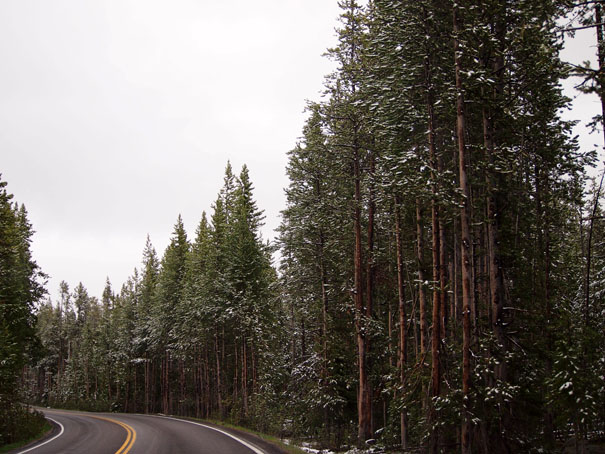
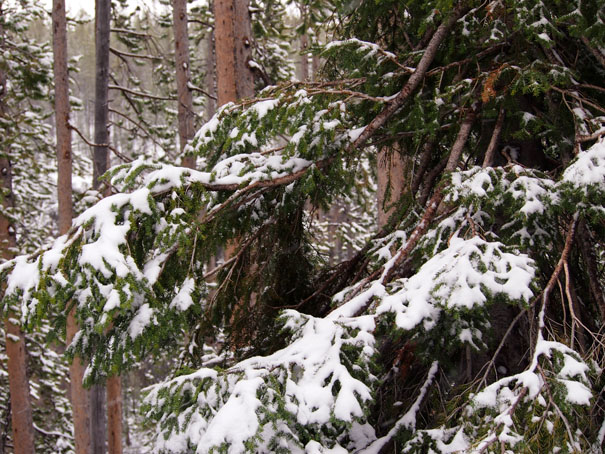
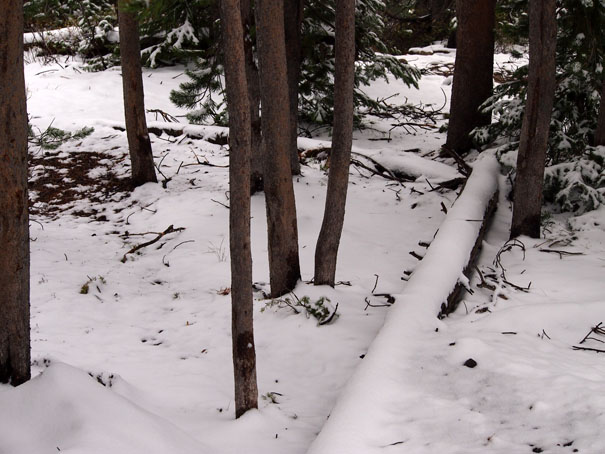
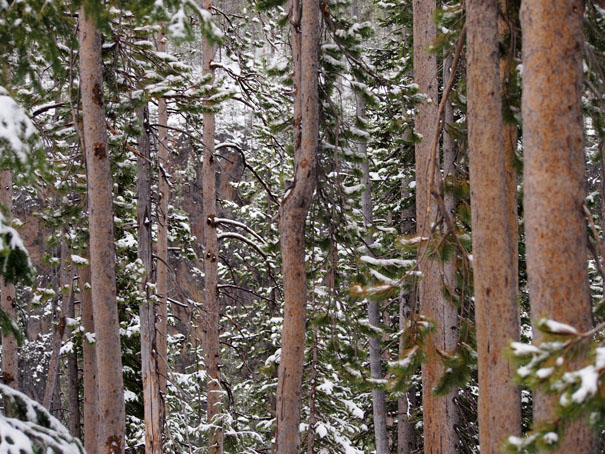
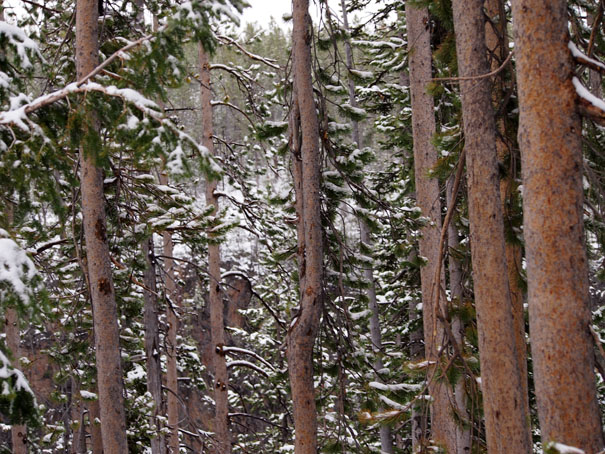
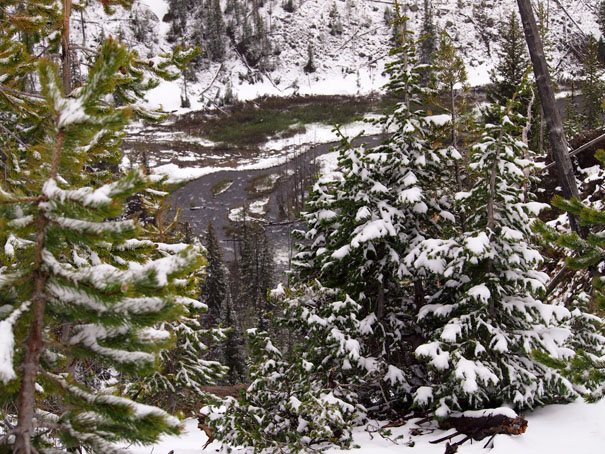
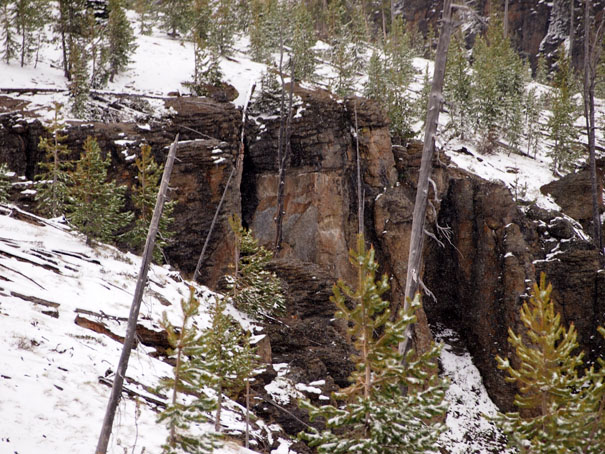
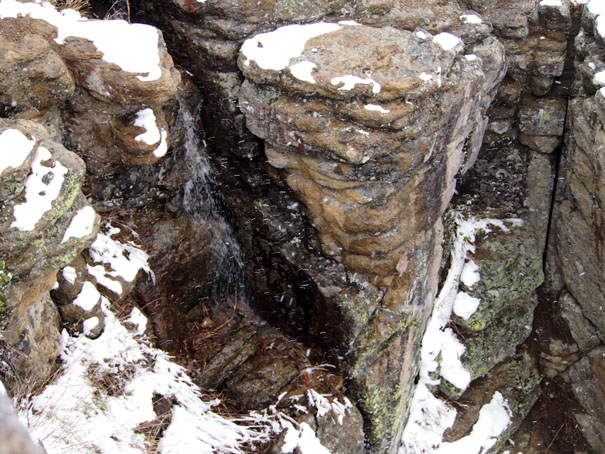
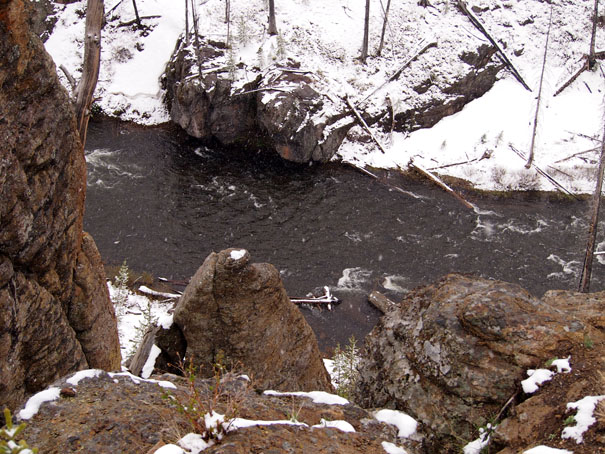
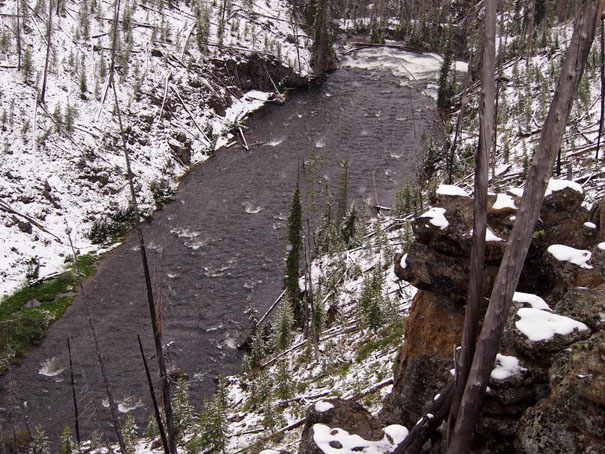
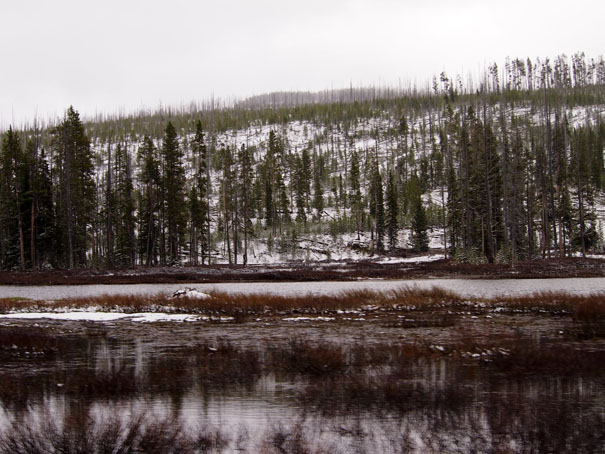
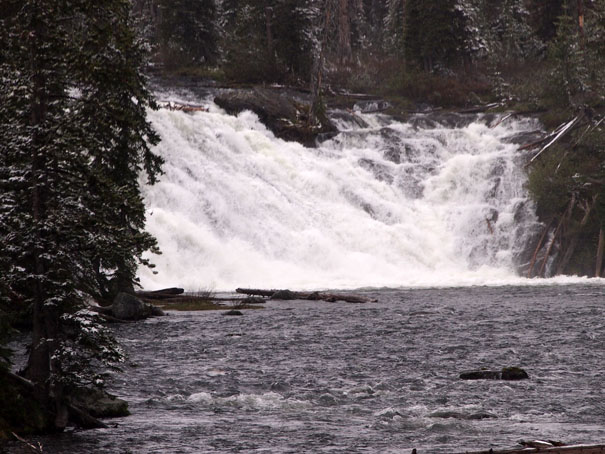

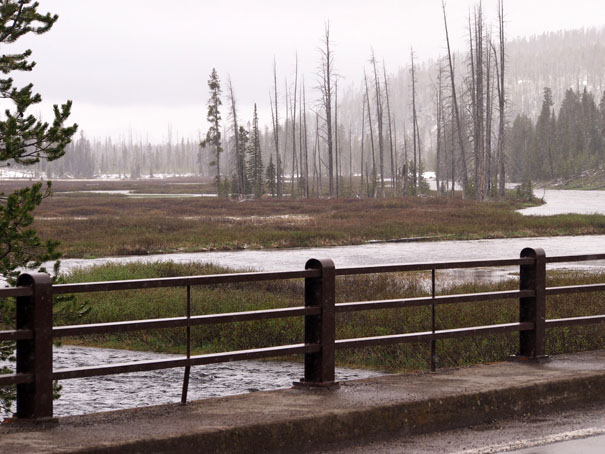
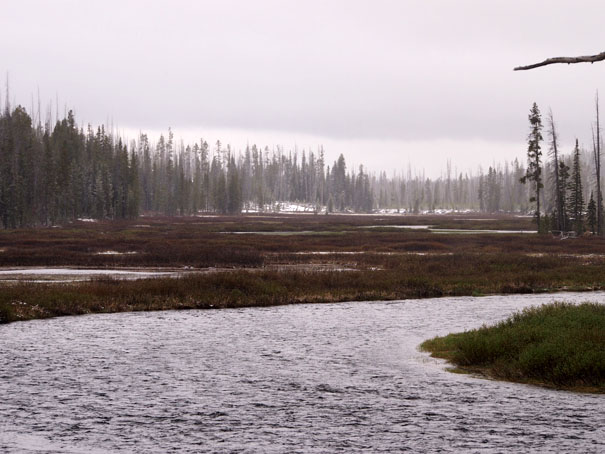
Now We Are Back at 'Old Faithful'
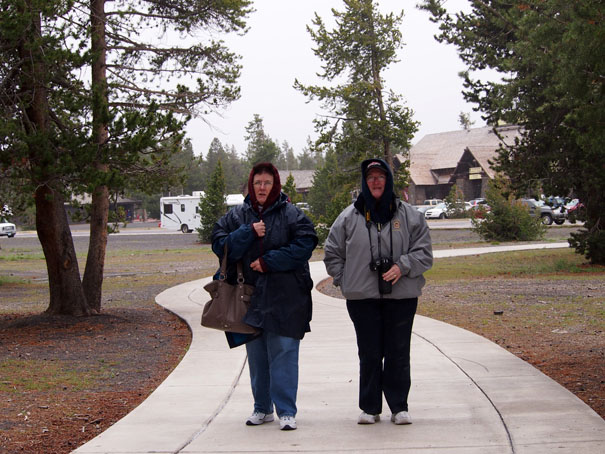
Janie and Bobbie
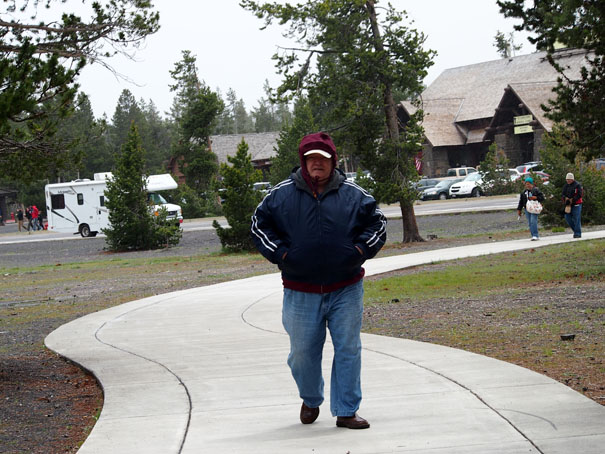
Dave
I think they are a little cold. At least 'Old Faithful' was erupting just as we arrived.
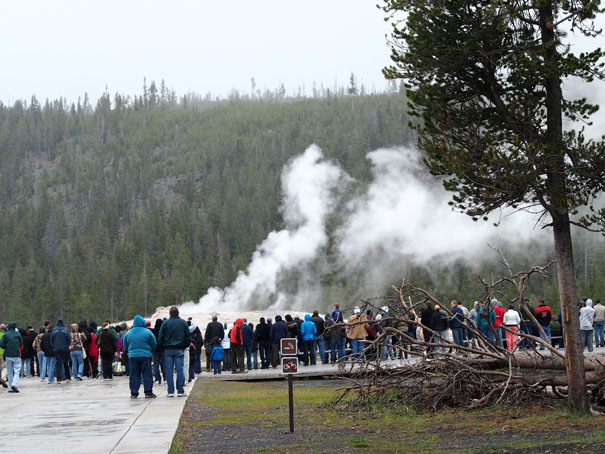

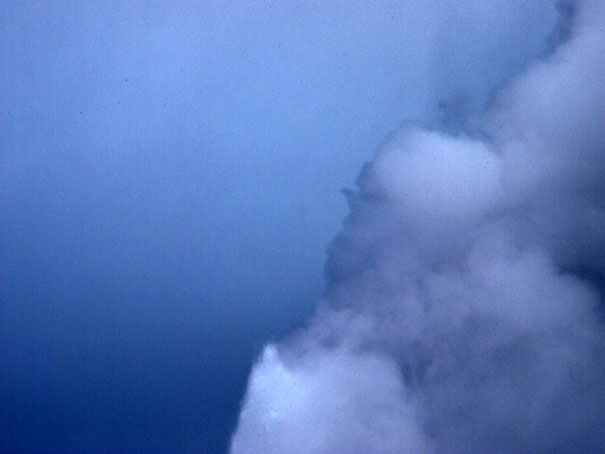
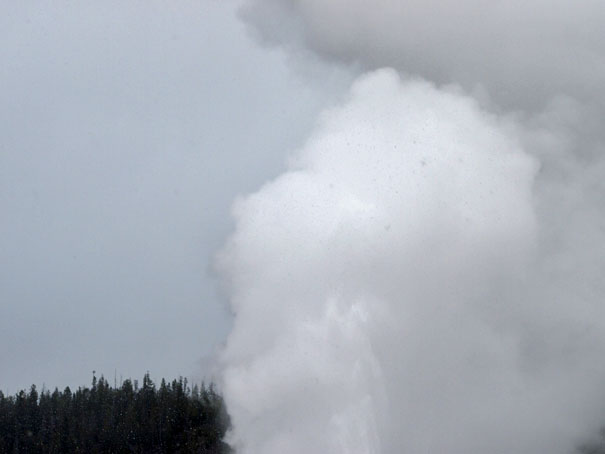
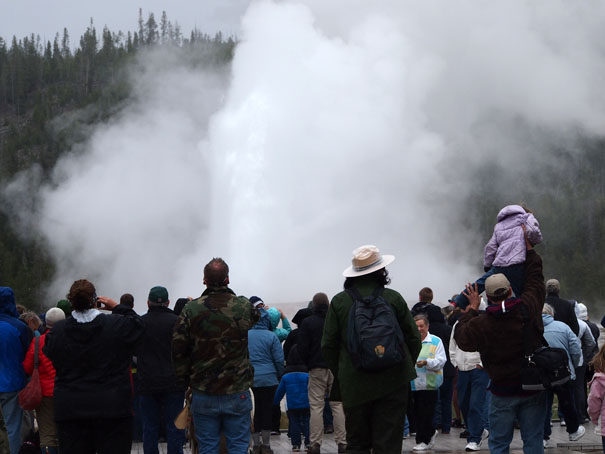
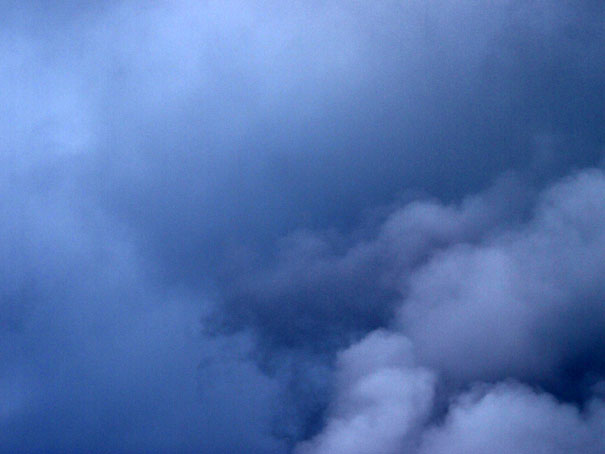
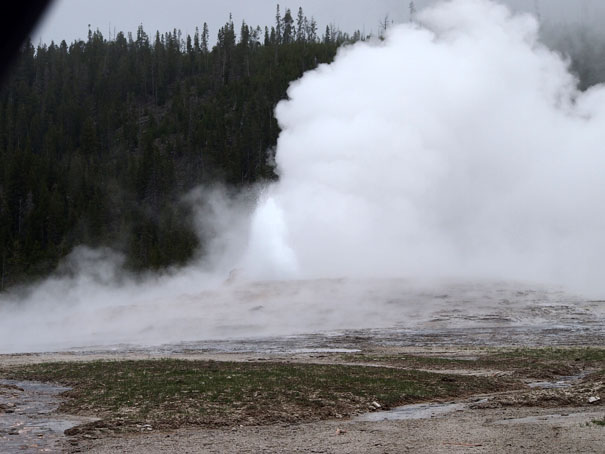
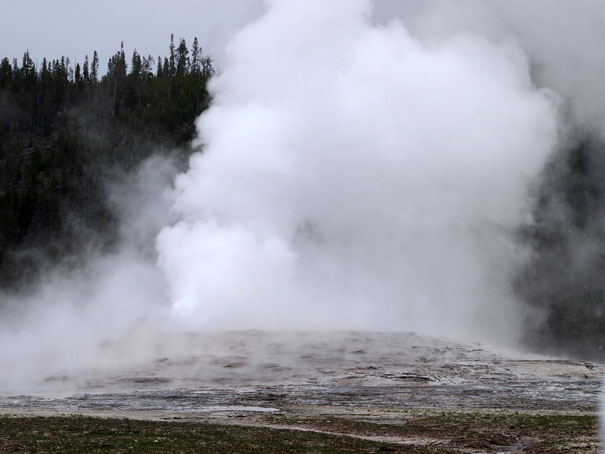
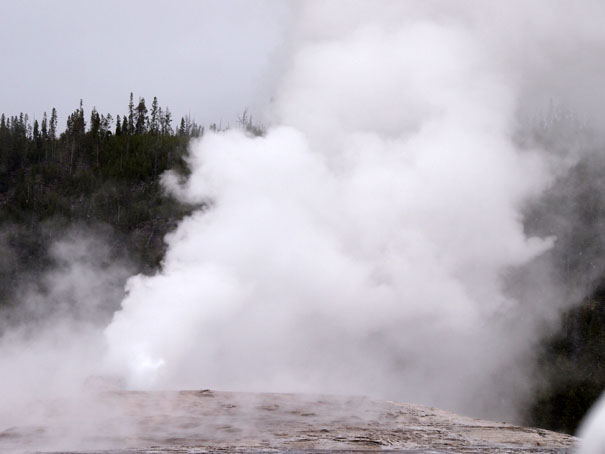

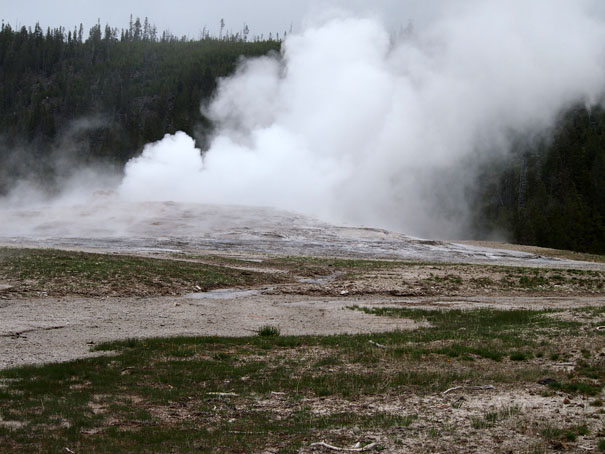

Looking Out at the Hot Water Geysers from 'Old Faithful'.
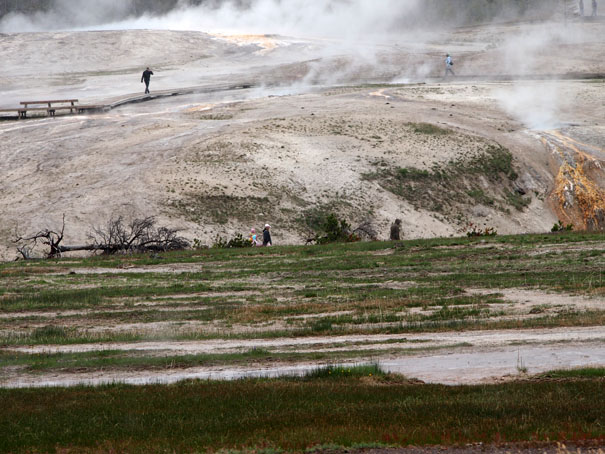
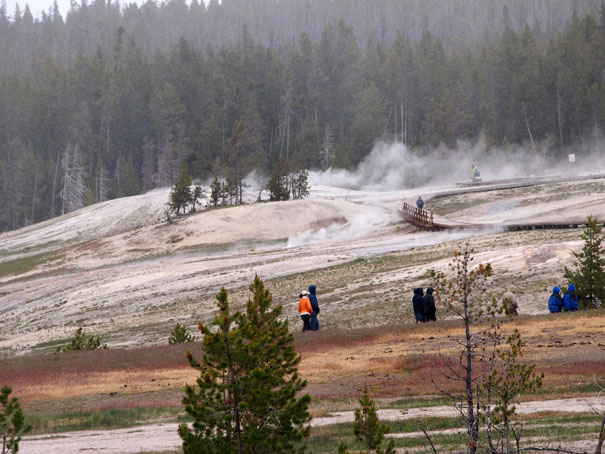
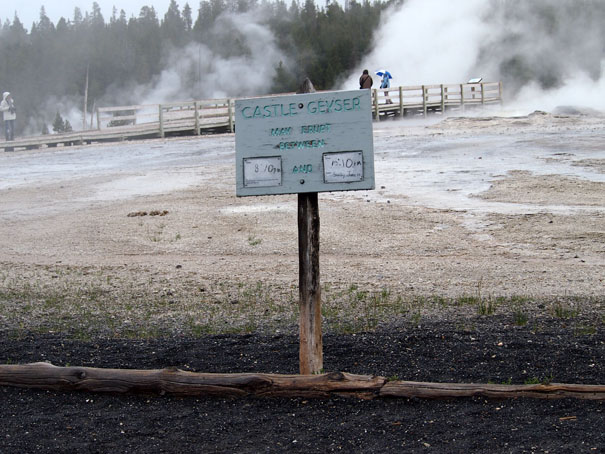
Castle Geyser
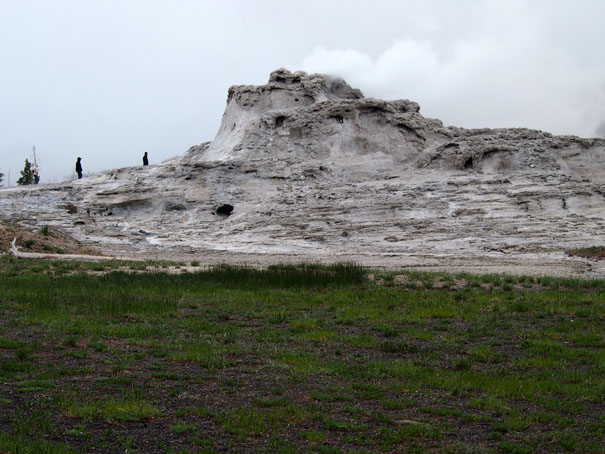
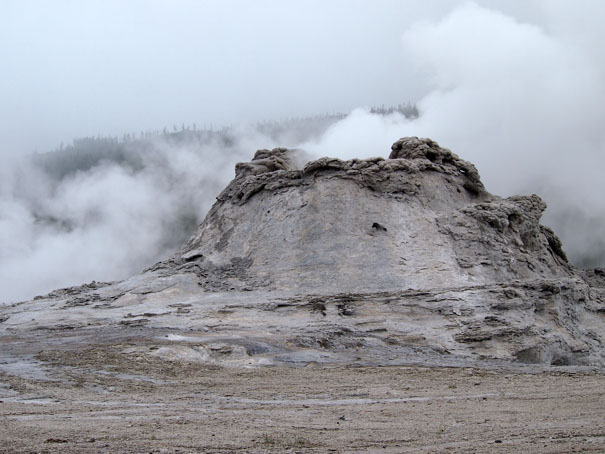
Crested Pool
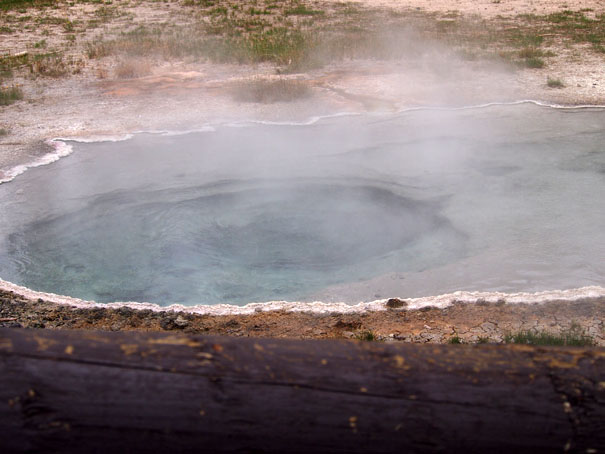
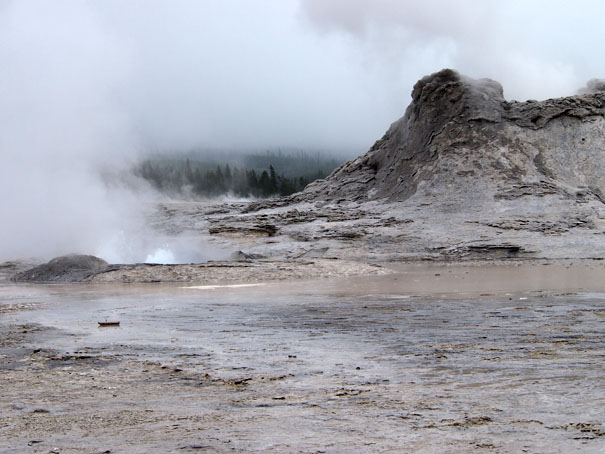
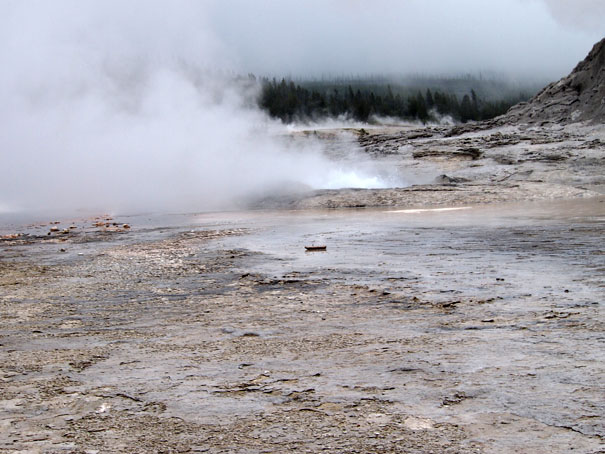
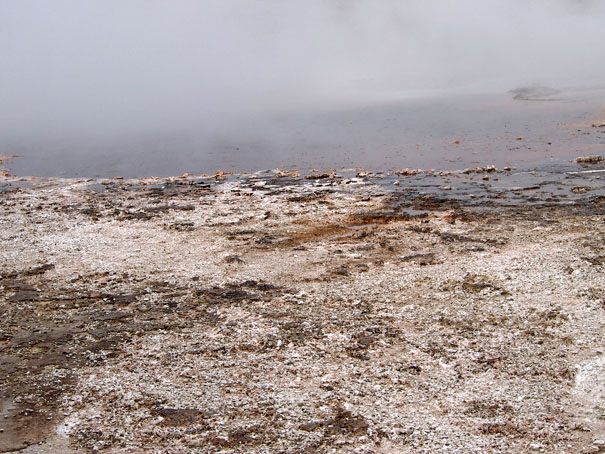


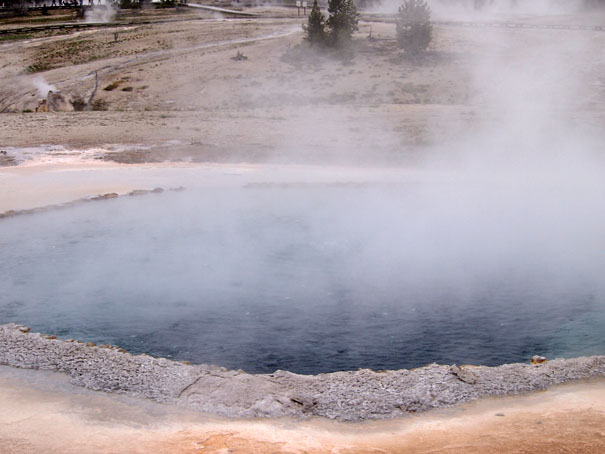
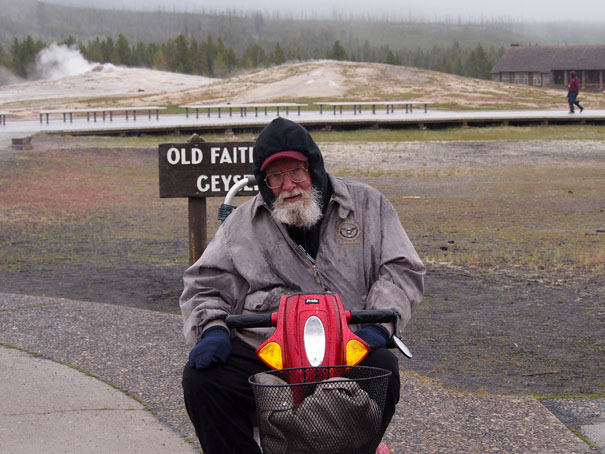
Bruce is cold and almost out of energy.
Steam Rising from the other Hot Water Springs

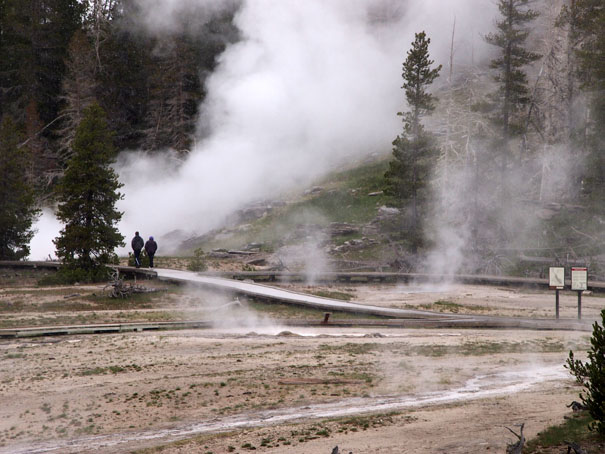

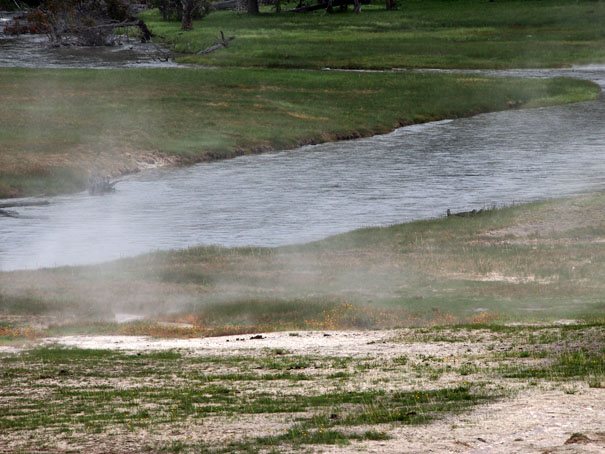
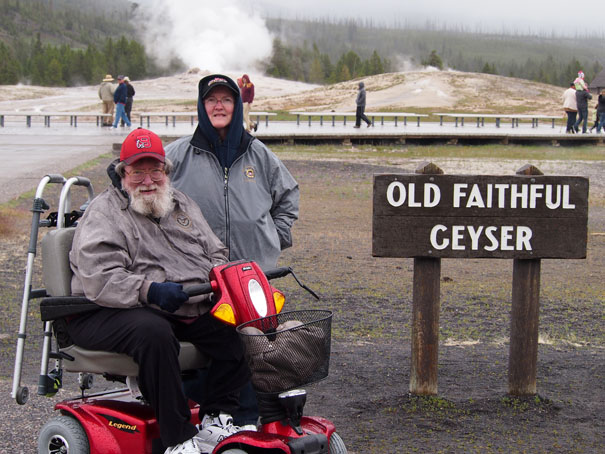
Bruce and Bobbie
Kepler Cascades
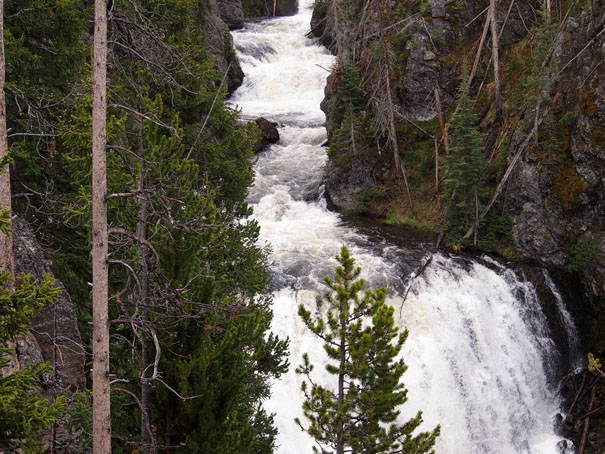


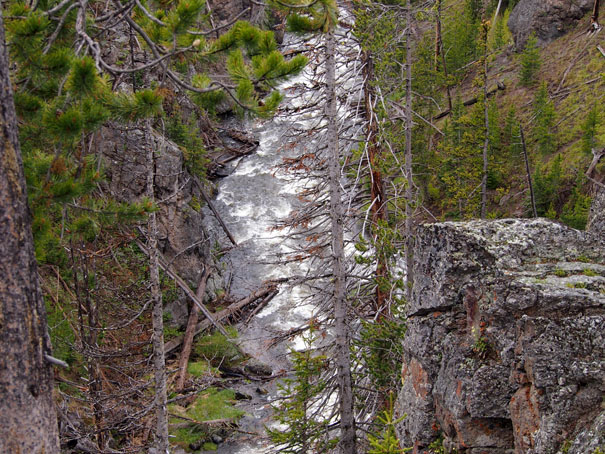
Yellowstone Lake
Yellowstone Lake is the largest body of water in Yellowstone National Park, The Lake is 7,732 feet above sea level and covers 136 square miles with 110 miles of shoreline. While the average depth of the lake is 139 feet its deepest spot is at least 390 feet. Yellowstone Lake is the largest freshwater lake above 7,000 feet in North America.
In winter, ice nearly 3 feet thick covers much of the lake, except where shallow water covers hot springs. The lake freezes over by early December and can remain frozen until late May or early June.
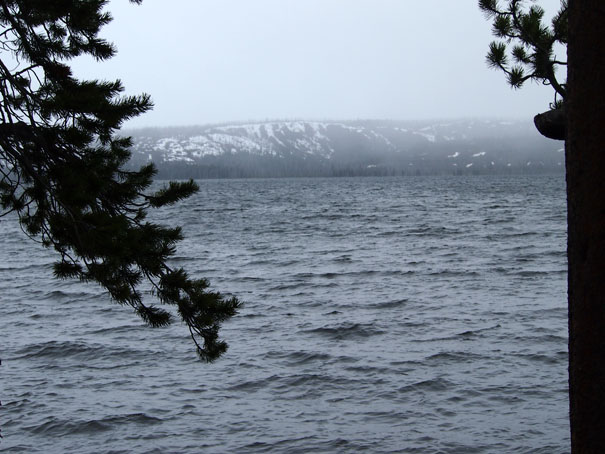
The forest and valleys surrounding Yellowstone Lake had been populated with Native Americans since pre-historic times. The first human of European descent to see the lake was trapper John Colter in the early 19th century. During the fur trading era of 1820 - 1840, the lake was probably visited by many trapping parties moving through the park region. In trapper Osborne Russell's diary he describes a visit to the lake in 1836:
Interesting Description of What Is Known as Yellowstone National Park: 16th August -Mr. Bridger came up with the remainder of the party. 18th -The whole camp moved down the east shore of the lake through thick pines and fallen timber about eighteen miles and encamped in a small prairie. 19th - We continued down the shore to the outlet about twenty miles, and encamped in a beautiful plain (Hayden Valley) which extended along the northern extremity of the lake. This valley was interspersed with scattering groves of tall pines, forming shady retreats for the numerous elk and deer during the heat of the day. The lake is about 100 miles in circumference, bordered on the east by high ranges of mountains whose spurs terminate at the shore and on the west by a low bed of piney mountains. Its greatest width is about fifteen miles, lying in an oblong form south to north, or rather in the shape of a crescent. Near where we encamped were several hot springs which boiled perpetually. Near these was an opening in the ground about eight inches in diameter from which hot steam issued continually with a noise similar to that made by the steam issuing from the safety valve of an engine, and could be heard five or six miles distant.

The lake has been known by various names as depicted on early maps and in journals. Both fur trader David Thompson and explorer William Clark referred to the lake as Yellow Stone. Osborne Russell referred to the lake as Yellow Stone Lake in his 1834 journal. On some William Clark maps, the lake has the name Eustis Lake and the name Sublette's Lake was also used to name the lake in the early 19th century. The name Yellowstone Lake appears formally first in the 1839 maps of the Oregon Territory by U.S. Army topographical engineer, Captain Washington Hood and has remained so since that time.
Quoted From: Yellowstone Lake - Wikipedia
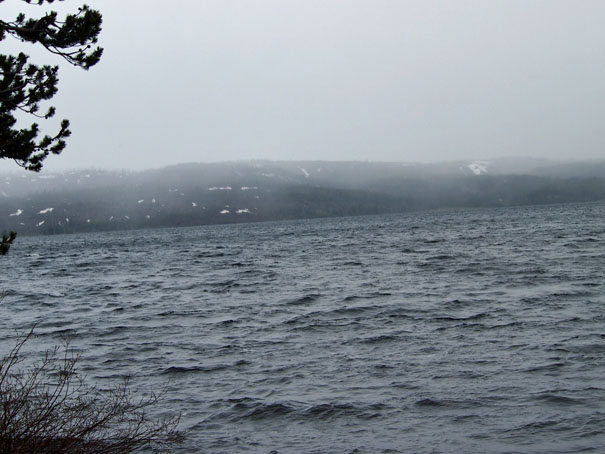
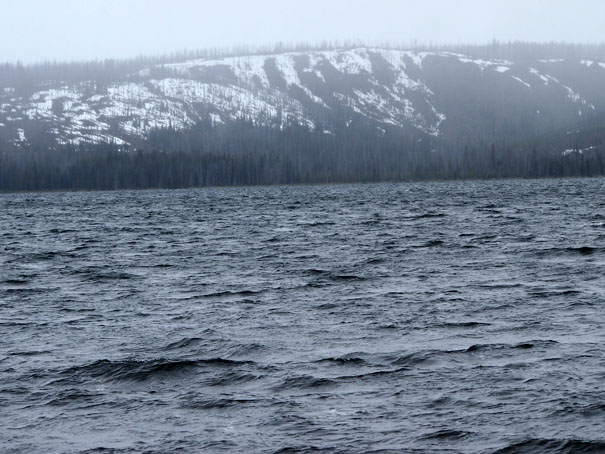
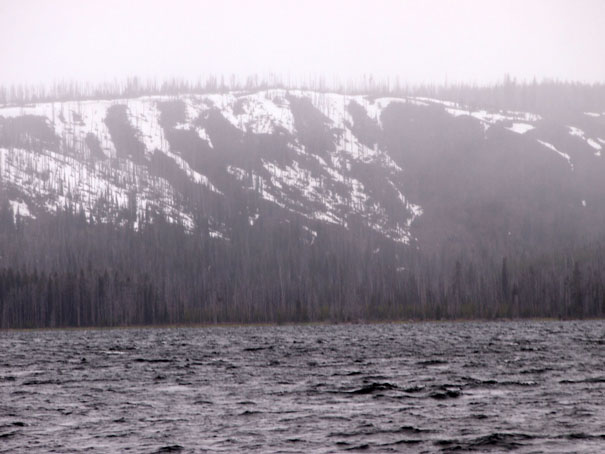
Return to Bruce and Bobbie's Main Page.